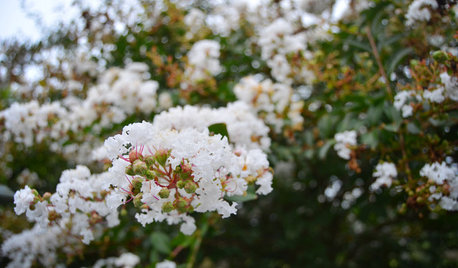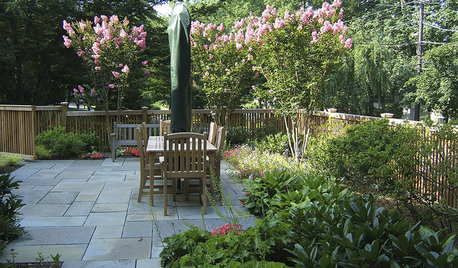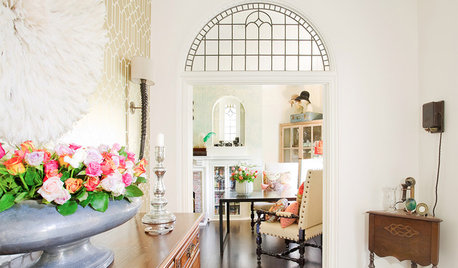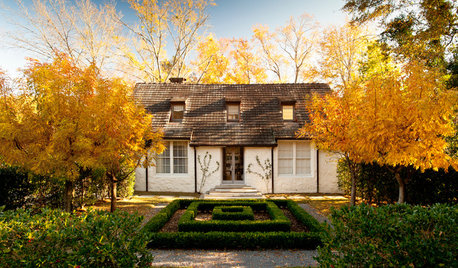Overwintering crape myrtle?
blue_velvet_elvis
16 years ago
Related Stories

GARDENING GUIDESBrighten Any Garden With White Crape Myrtle
A terrific supporting player to other plants, white crape myrtle can help a walkway or other parts of a landscape gleam
Full Story
GARDENING GUIDESGreat Design Plant: Crape Myrtle
With long-lasting blooms and gorgeous exfoliating bark, this ornamental tree brings bright color and a unique form to the landscape
Full Story
GARDENING GUIDES5 Best-Behaved Trees to Grace a Patio
Big enough for shade but small enough for easy care, these amiable trees mind their manners in a modest outdoor space
Full Story
DECORATING GUIDESHouzz Tour: Arts and Crafts Cottage Gets a Lively Remake
An interior designer uses color, light and historical touches to brighten up a 1920s Sydney home
Full Story
FALL GARDENING6 Trees You'll Fall For
Don’t put down that spade! Autumn is the perfect time for planting these trees
Full Story
GARDENING FOR BUTTERFLIESGarden for Wildlife to Reap Rich Rewards
When you plant with animals and insects in mind, you make gardening easier, the planet healthier and yourself more present
Full Story
TREES7 Deer-Resistant Flowering Trees to Plant this Fall
If you live in a neighborhood with roaming deer, consider these beautiful trees that won't tempt hungry guests
Full Story
GARDENING GUIDES6 Plants for Colorful Fall Foliage in the Water-Wise Western Garden
Try these colorful, drought-tolerant additions to your garden for a fall season filled with color
Full Story
CONTAINER GARDENS3 Steps to Creating Quick, Easy and Colorful Succulent Containers
Take a bright container, add a colorful succulent or two and have a professional, summery design in minutes
Full Story
GARDENING GUIDES10 Solutions for Soggy Soil
If a too-wet garden is raining on your parade, try these water-loving plants and other ideas for handling all of that H2O
Full Story






rhizo_1 (North AL) zone 7
blue_velvet_elvisOriginal Author
Related Professionals
Carson Landscape Architects & Landscape Designers · Ilchester Landscape Architects & Landscape Designers · Norton Shores Landscape Architects & Landscape Designers · Norwood Landscape Contractors · Westwood Landscape Contractors · Apollo Beach Landscape Contractors · Wareham Landscape Contractors · Raytown Landscape Contractors · Fairfax Decks, Patios & Outdoor Enclosures · Fresno Decks, Patios & Outdoor Enclosures · Issaquah Decks, Patios & Outdoor Enclosures · Midwest City Decks, Patios & Outdoor Enclosures · Prichard Decks, Patios & Outdoor Enclosures · Rogers Decks, Patios & Outdoor Enclosures · Wheaton Decks, Patios & Outdoor Enclosuresrhizo_1 (North AL) zone 7
blue_velvet_elvisOriginal Author
cdjr
katrina1
blue_velvet_elvisOriginal Author
blue_velvet_elvisOriginal Author
todd43162
diggingthedirt
todd43162
diggingthedirt